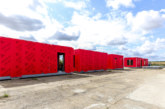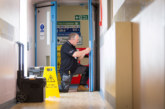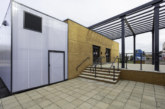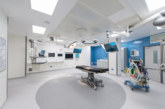Raymond Millar looks at how a new ambulatory care facility was delivered at Northumbria Specialist Emergency Care Hospital in less than a year – an unprecedented programme for the scale and complexity of the project.
In March 2018, Northumbria Healthcare Trust called the McAvoy offsite healthcare team to a meeting to discuss their ambitious schedule of accommodation. The Trust had established a clinical need for a purpose-designed ambulatory care facility to help decompress a very busy emergency department and ensure patients are seen quickly by the most appropriate healthcare professional. Ambulatory care provides urgent same day medical care without the need for patients to stay overnight in hospital.
Northumbria Specialist Emergency Care Hospital opened in 2015 and is England’s first purpose-built specialist emergency care hospital, with emergency consultants on site 24 hours a day, seven days a week, supported by consultants in a range of specialties. However, the existing facilities did not suit the type of service provision offered by ambulatory care – which was operating in a converted ward. The Trust believed the most effective solution would be a dedicated, purpose-designed unit to provide a much-improved environment for patients – and built using offsite construction to achieve earlier occupation.
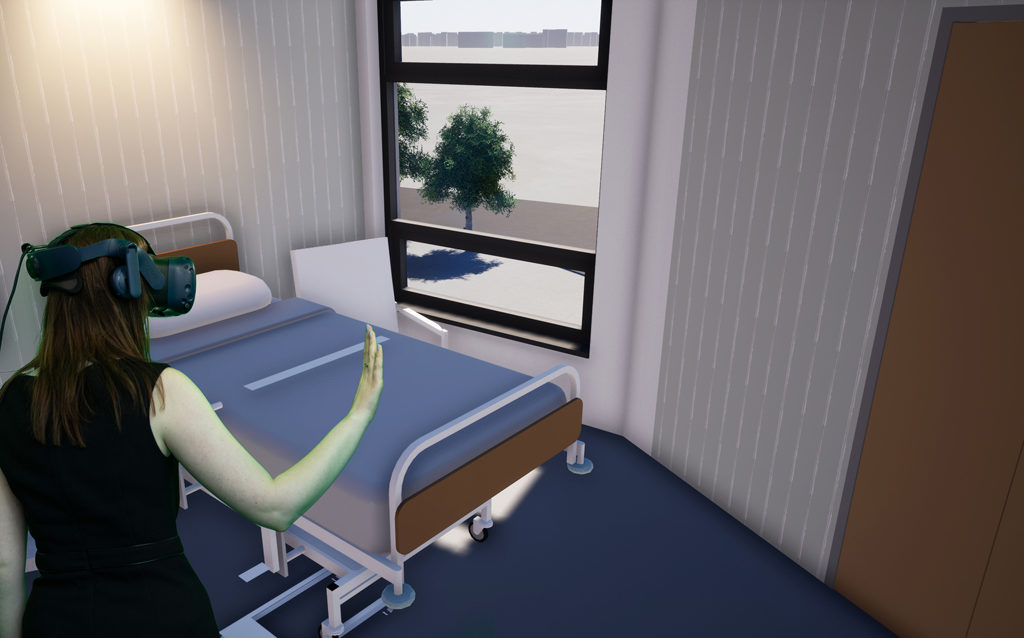
Developing the design
The new building had to follow the architectural principles of the existing hospital. This has a bold, striking and simplistic design, and is finished in the Trust’s corporate colours of blue and white.
Award-winning healthcare architects P+HS had worked with both the Trust and The McAvoy Group previously and were brought into the team to develop the schedule of accommodation with the users and the design to suit offsite construction.
Advancements in digital technology
Virtual reality (VR) and 3D modelling were used to assist the user group in assessing the building design and layout. This also helped to inform stakeholders about how the proposed spaces would be used on completion. Nurses could ‘walk through’ the building for familiarisation. This digital solution gave the client full awareness of the space and how the different specialisms would interact.
The user group was able to experience the facilities, check adjacencies and select colour schemes in a virtual environment as part of the detailed design phase. One person wearing a headset would ‘drive’ the VR with others in the group looking on.
Rob Sanderson, Deputy Director of Capital Projects at the Trust said: “Having a VR model of our proposed new facilities was invaluable. It allowed us to demonstrate the clinical environment to our staff and stakeholders, equipping them with all the information they needed while the project was under construction. As a Trust, we are committed to utilising the latest digital technology and will aim to use VR on future development projects wherever possible, following its success with this scheme.”

From briefing meeting to building envelope
The structure for the 6,500m2 three-storey building was manufactured offsite by McAvoy in a £15m contract using the latest modular technology to minimise disruption to patient care and reduce the build programme by half. The building was craned into position as 294 steel-framed modules in a highly complex operation and just 10 months after the initial meeting with the Trust.
The new wing is linked to the existing hospital on three levels. The first floor was fitted out by McAvoy as part of this contract to accommodate one of the UK’s first purpose-designed Ambulatory Care units, with the two other floors fitted out in the next phase of the development.
New model of care
The dedicated, 2,025m2 facility for ambulatory care provides medical, surgical and gynaecology care in a relaxed and comfortable environment. It also accommodates a fracture clinic. This allows around 100-120 patients to be treated the same day across four specialisms, without the need for hospital admissions – seven days a week. This is helping to de-congest the emergency department.
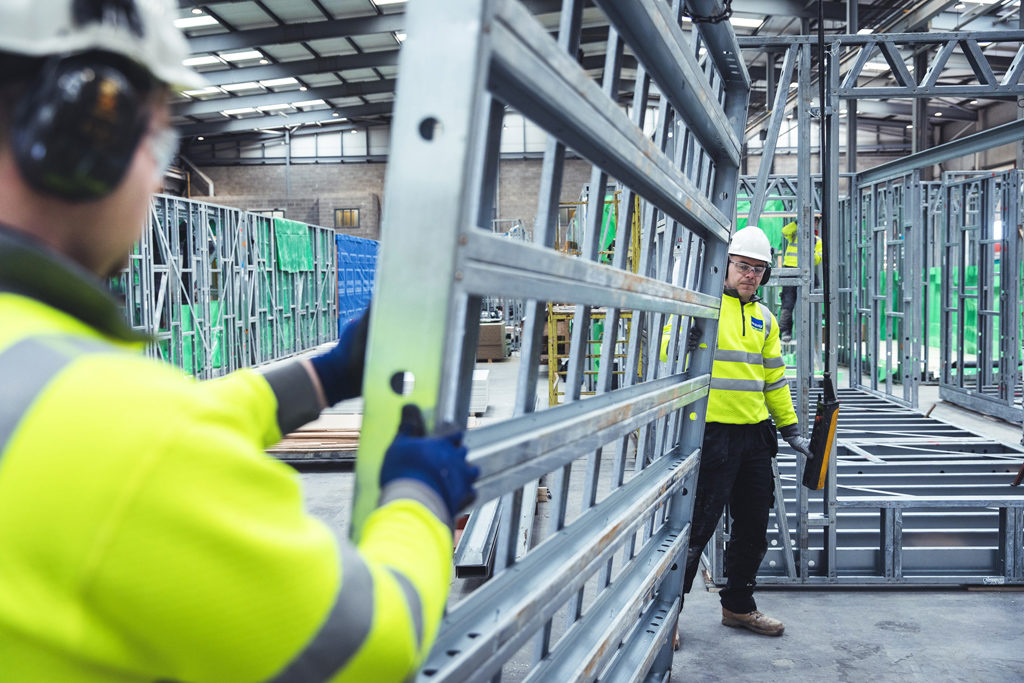
The latest offsite technology
McAvoy pushed the boundaries of offsite construction with this project. It is a highly complex scheme on a live hospital site. The design of the existing hospital has been integrated into the extension and offsite construction has delivered the building to a very short programme. A hybrid solution was developed which incorporates both offsite and in-situ building methods. This approach enhanced quality and reduced disruption to staff and patients.
The construction solution has a three-storey offsite structure with an in-situ built curved link on each floor, a roof-top plant room and full-height stair towers.
The project features a number of innovations. It used larger, bespoke modules up to 14.85m long which were specially engineered to provide a structural flooring solution that seamlessly integrates the existing hospital building on each level. This met the key requirement for efficient patient flows. Mechanical ventilation, heating and cooling systems were installed in the ceiling voids in the McAvoy factory – an industry first in the healthcare sector.
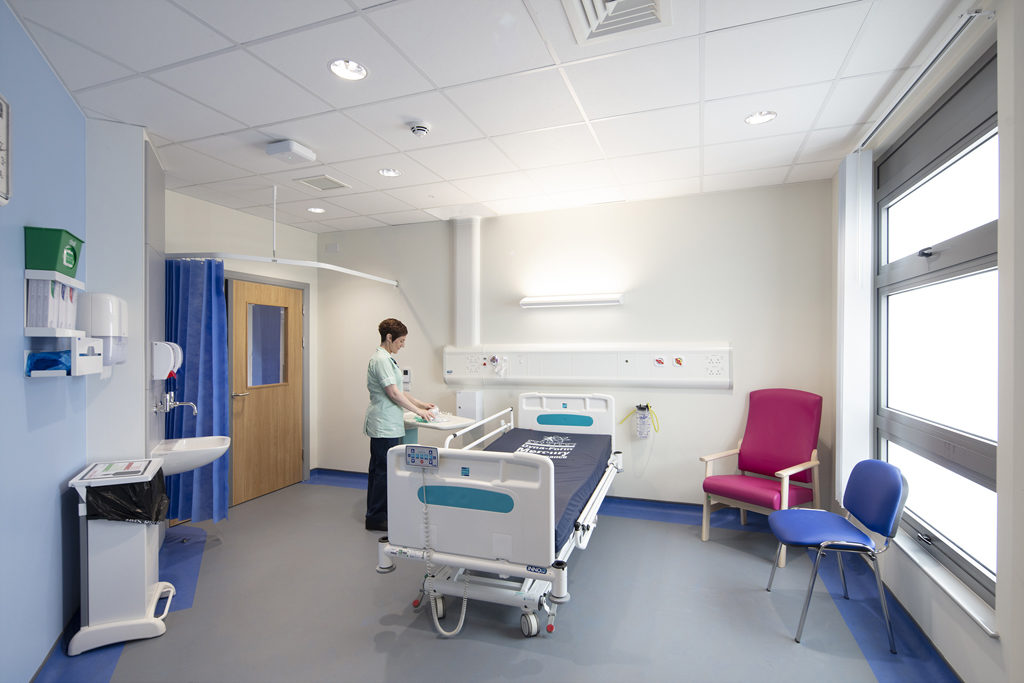
The Clinical Perspective
Dr Eliot Sykes, Clinical Director for Surgery and Elective Care, said: “The building was clinically designed and led and there was fantastic collaboration and engagement across the clinical, estates, design, and construction teams. This strong working relationship at every level was key to the project’s success.
“The users were very engaged from the outset and had the freedom to express their views on the design development. The design of new hospital facilities is too often finalised without clinical input – which then compromises efficiency and the patient environment. This was not the case here. The engagement process was very agile.
“The amount of natural light is an excellent feature and was a fundamental design requirement. This is so important for staff and patients.
“The new ambulatory care unit has already made a very real difference to our patients. It will significantly enhance our ability to manage peaks in demand whilst still providing dedicated ambulatory care. Offsite construction has been brilliant in terms of build quality and the pace of construction. We were amazed at the rapid progress from our first meeting to commissioning, and for a building of this scale.
“Most importantly, feedback from patients has been extremely positive. They love the design and talk about the progressive model of care. Their experience is that waiting times are shorter and they are impressed with the rapid diagnostics service. This is an outstanding facility for the Trust and is really unique in the UK.”



